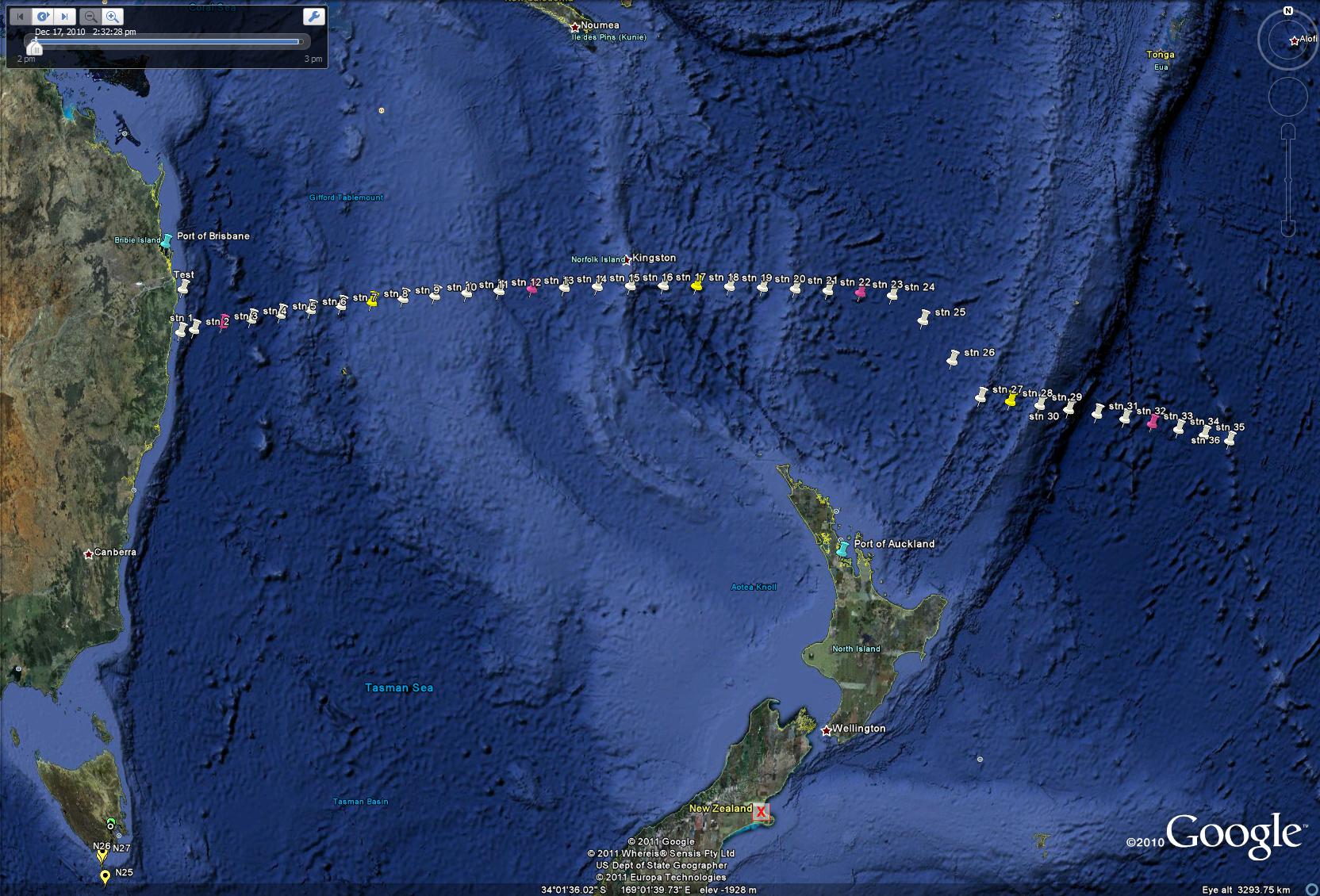GP13 cruise sets sail in the southwest Pacific
A joint Australian-New Zealand GEOTRACES cruise set sail from Brisbane on May 13 on-board the Australian vessel RV Southern Surveyor. This voyage will undertake a zonal transect along ~300S east of Australia out into the South Pacific (GP13). Three types of stations will be used to achieve our aims: (i) normal stations (every 10 of longitude), (ii) super stations (every 50), and (iii) mega stations (every 100). The Australian leg of GP13 will arrive in Auckland on June 5, where we will transfer scientific equipment to the New Zealand vessel RV Tangaroa which will extend the line further east into the South Pacific. We will also be joined by South African scientist Thato Mtshali from CSIR in Stellenbosch, who will join the cruise under the GEOTRACES education and training program. We are grateful to SCOR-GEOTRACES for supporting Thato’s participation.

GP13 (Australian leg) Cruise Track
Chief Scientist (Australian leg): Andrew Bowie; Chief Scientist (New Zealand leg): Philip Boyd.
Specific aims of the project are:
(1) Undertake an integrated zonal oceanographic transect east of Australia studying the marine biogeochemical cycles of TEIs, as part of Australasia’s contribution to the international GEOTRACES program;
(2) For the first time, establish the full water column, basin-scale distribution of TEIs (which a specific focus on iron, aluminium, manganese, copper, zinc, cobalt, cadmium), and investigate the role of micronutrient TEIs in the oceans surrounding Australia, and their relationship to environmental and ecosystem conditions;
(3) Determine the sources, sinks and fluxes of iron and other TEIs (focussing on atmospheric dust delivery and biomass burning), as well as their transport, solubility and chemical form in the ocean. This includes the use of quasi-conservative elemental tracers of inputs, dissolution and redox cycling;
(4) Collect subsamples for subsequent analysis of other GEOTRACES ‘key parameters’ (such as stable, radioactive and radiogenic isotopes; as listed in Table 2 of the GEOTRACES Science Plan) by international colleagues who are not able to participate in the field program.
